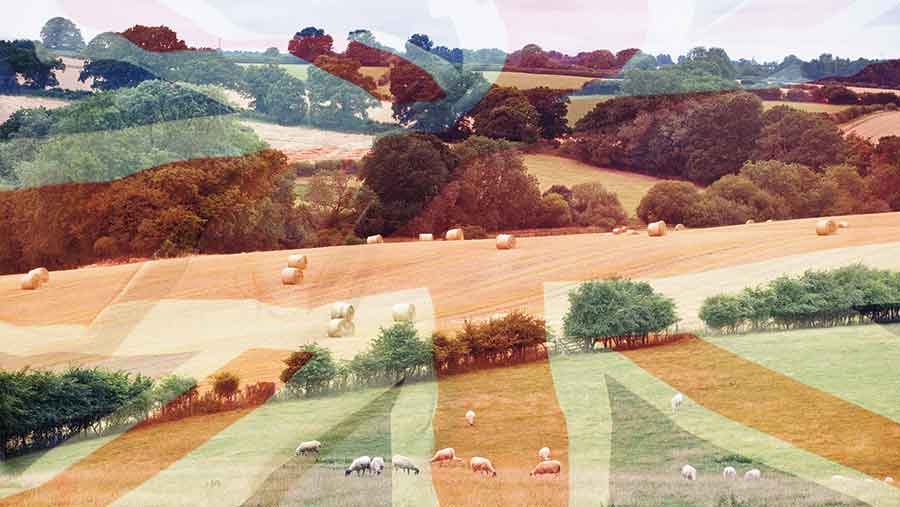How to review your farm business to prepare for Brexit
 © Tim Scrivener and ING
© Tim Scrivener and ING Lower subsidy prospects and Brexit uncertainty mean farm businesses need to identify the main issues affecting them and how these might be managed.
“Change may seem daunting, but farmers who identify the key opportunities and threats to a business and act accordingly will be well placed,” says Brown & Co agri-business consultant James Brown.
A review to make the business fit for the future should first look at farm structure and assess its physical and financial assets and performance, including a calculation of how much single payment contributes to profit.
See also: Farm energy – legal pitfalls and how to avoid them
The next step is to identify business objectives, alongside opportunities to improve and protect the business.
Such a review of the firm’s model arable unit, Brown’s Farm, produced several recommendations which can be acted on before Brexit (see “Brown’s Farm fit-for-the-future recommendations”, below).
The farm is a typical eastern counties arable unit:
- A family farming partnership growing a mix of combinable crops and sugar beet
- 420ha (260ha owned, 160ha on an FBT)
- Well-managed, reasonably strong yields (for example,wheat at 9.25t/ha), but carrying some high costs
Its main risks include exposure to fluctuating commodity markets, which is reflected in recent financial performance, with business profits over the past four years ranging from £50,500 in 2014 to £6,300 in 2016.
Less BPS money
After 2020, there is a significant risk that Brown’s Farm’s Basic Payment Scheme (BPS) monies will be reduced significantly.
In the year ending April 2016, BPS was 14% of turnover and 22% of gross profit. The profit of 6,300 would have been a loss of almost £66,500 without BPS income.
Brown’s Farm fit-for-the-future recommendations
- Review current structure of finance arrangements. Place some debt on a fixed-rate basis to reduce interest rate exposure
- Assess marketing potential of off-lying land with a view to reducing borrowings
- Review rent levels and act accordingly
- Review machinery structure and costs – dispose of redundant machinery
- Consider possibilities for machinery sharing, including joint ventures, to cut operating costs
- Assess planning and development opportunities – some take many years to develop
- Firm up timescale for succession, involve son in strategic and management decisions
- Consider options for replacing employee when retirement comes in four years – for example, a house could be freed up to provide rental income
- Investigate options to provide financial base for daughter
- Consider environmental opportunities
Since 2014, total borrowings have increased by more than £76,000 to about £1.1m, often due to drawings exceeding profit and machinery investment.
Browns Farm has a land loan of £610,000 as well as a peak overdraft requirement of £500,000.
Rents are relatively high (£79,000), as are finance charges (£57,000). These are typical of a business of this size.
“Many have invested heavily in land and machinery in the past 10 years, which has resulted in costs within this region,” says Mr Brown.
Power and labour costs are also relatively high.
Like many others, the business also faces a family succession challenge, with the father wanting to retire within five years and hand the business over to his son. He also wishes to provide for his daughter in the future.
The business carries a high level of exposure to possible interest rate rises.
Areas of risk
When assessing options and looking ahead, be aware of areas of risk that can be overlooked, warns Mr Brown.
These include the importance of family labour; commitment to debt, including hire purchase; and running and operating second homes, including drawings. Succession, tax planning and possible grant opportunities.
Interest rate rises are another important risk factor and with rates at record lows for many years, have gone off the risk radar for many people.
These issues are relevant to many farm businesses but where livestock enterprises are included, further aspects need to be considered:
- Equipment – rate of investment needed
- Disease issues
- Opportunities for diversification, such as conversion of redundant farm buildings
- Opportunities for off-farm work depending on size of the holding
- Opportunities for adding value to the end product
- Management of feed and grazing systems
Brown’s Farm is a mixed owner-occupied and tenanted business. Those farming only rented land also need to assess:
- Rental agreements, types of tenancies – exposure to risk, for example, is a high proportion of land on grazing licences or cropping licences
- Machinery – quality, and level
- Debt level – limited assets to provide security, potentially only have an overdraft
- Opportunities for expansion and diversification – what terms or opportunities are available within the tenancy?
- Opportunities for additional income, such as working off the farm without jeopardising succession
- Retirement planning, particularly on FBT and council tenancies
- Succession planning, particularly on AHA tenancies
Brown & Co is offering a fit-for-the-future review for £500, to include an initial visit and a written report presented at a second visit, where the report is discussed along with recommendations.
